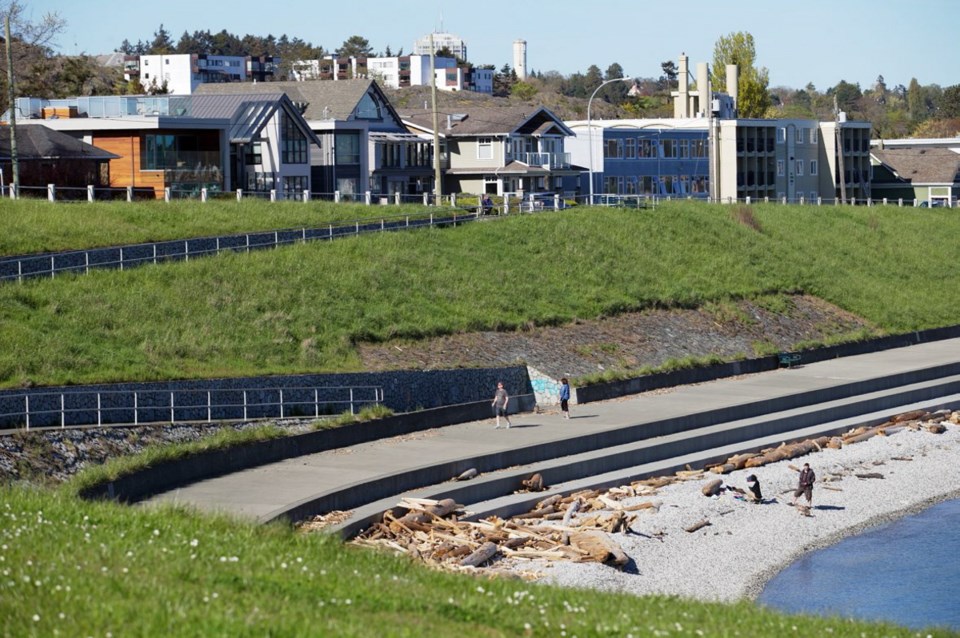The prospect of a sewage treatment plant at Clover Point Park drew hundreds of residents to a public meeting Monday, but instead of having an opportunity to vent, they were handed pens and pencils and told to put their views in writing on sticky notes.
That didn’t stop the crowd of about 400 to 450 people, middle aged to seniors, from making their views clear.
When resident Brian Lepine stood and asked the crowd to show with applause if they were opposed to a treatment plant at Clover Point the response was loud and sustained, with people clapping, pounding tables and cheering.
“I appreciate the feedback and certainly understand the position that all of you have. That’s very clear. But I think the key tonight is we’d like to get a bit more nuanced,” city director of sustainable development Jonathan Tinney said to chuckles and a sprinkling of applause from the crowd.
There was no Q & A. Several city councillors, including Mayor Lisa Helps, were in the room but didn’t take the microphone — leaving that task to Tinney while they worked with residents at tables.
“We opted for this format to try to get the most input we could get from this rather large group of people in as quick a time as possible,” Tinney said.
“A big part of what we’re trying to do this evening is hear from you about what the process ought to look like going forward,” Tinney said.
Working in small groups, residents wrote down their thoughts on sewage treatment. Many cards outlined that Clover Point is too small, too close to houses and too well used as a park.
Coun. Chris Coleman, council liaison for the Fairfield neighbourhood, said it was clear that several people at the meeting left frustrated and somewhat baffled that Clover Point has come almost out of nowhere to replace Rock Bay as one of the preferred sewage treatment sites.
“I probably had 30 different conversations last night with people who said: ‘Explain to me how we got here.’ So the frustration level is high,” Coleman said Tuesday.
“A lot of people hated the post-it note component but other people got into it.”
Helps acknowledged some people may have been frustrated by the lack of opportunity to speak but said this way, more people could participate.
“There were over 400 people there. If we had had a Q & A open mic, we would have got input from let’s say 40 people at the very most. This way we got input of, I would say, 75 per cent of people who were there,” Helps said.
The meeting was the first of many over the next few months as the city decides whether to allow a treatment plant to be buried under Clover Point but also looks to draft policies surrounding the siting of a treatment plant anywhere within city boundaries and the opportunities that presents, Tinney said.
Wayne Hollohan, chairman of the Fairfield/Gonzales planning and zoning committee, was thrilled at the high attendance but less than impressed with the format.
“We want to ensure the community have enough information so they are able to make informed decisions. So I don’t think all the necessary information was provided [Monday] night in order to help facilitate that,” he said.
Hollohan said it’s “obvious” that the residents were not interested in Clover Point as a treatment plant site. He noted there are some sites nearby such as in Beacon Hill Park that would make more sense than Clover Point.
But Marg Gardiner, president of the James Bay Neighbourhood Association, said James Bay is not interested, and that city parks, particularly naturalized park areas, should be the last resort for site selection.



